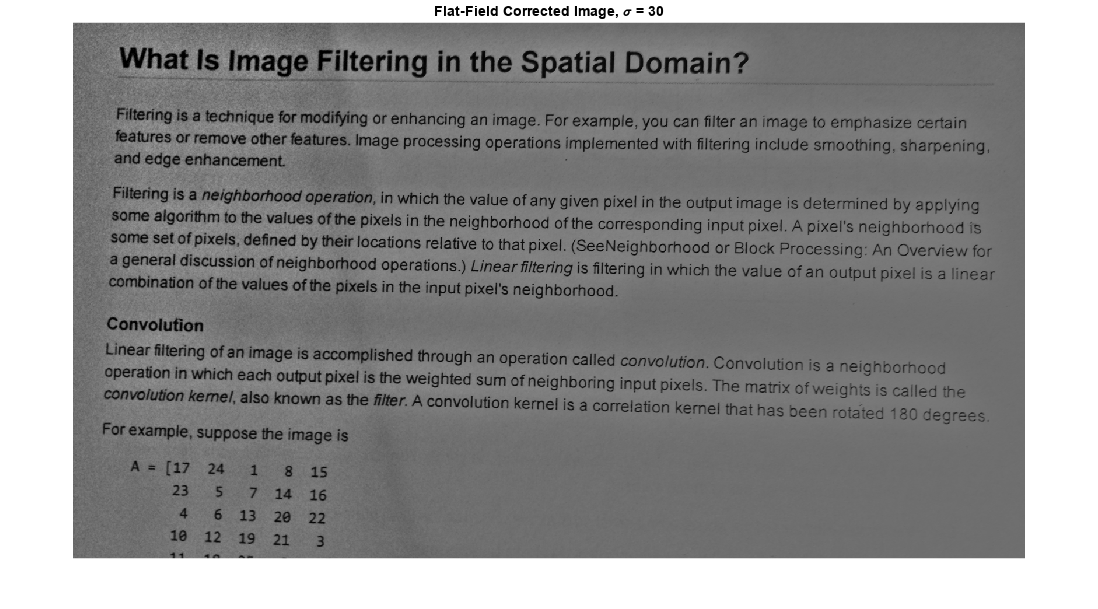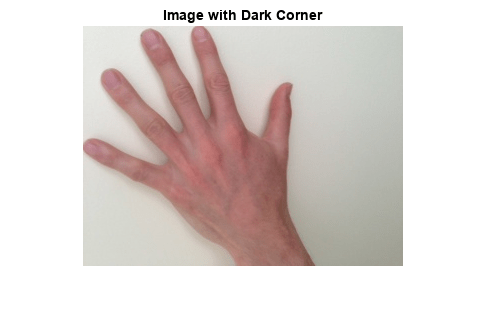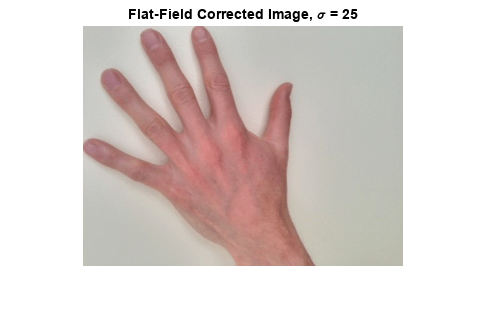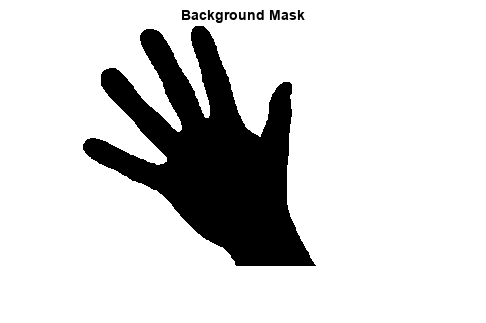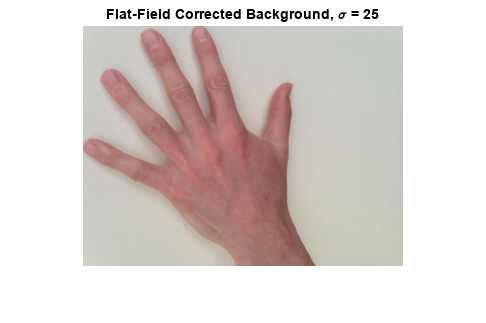imflatfield
2-D image flat-field correction
Syntax
Description
J = imflatfield(___,'FilterSize',filterSize)
Examples
Input Arguments
Output Arguments
Tips
When
Iis an RGB image, thenimflatfieldconverts the image to the HSV color space usingrgb2hsvand applies the flat-field correction to the HSV Value channel. The image is converted back to RGB color space by usinghsv2rgb.If you specify a
mask, thenimflatfielddilates the mask and pads the image boundaries to reduce edge artifacts during the flat-field estimation.
Version History
Introduced in R2018b

